Table of Contents
ToggleHow to Fill Out a Baseline Survey Form for Mission YUVA: A Step-by-Step Guide
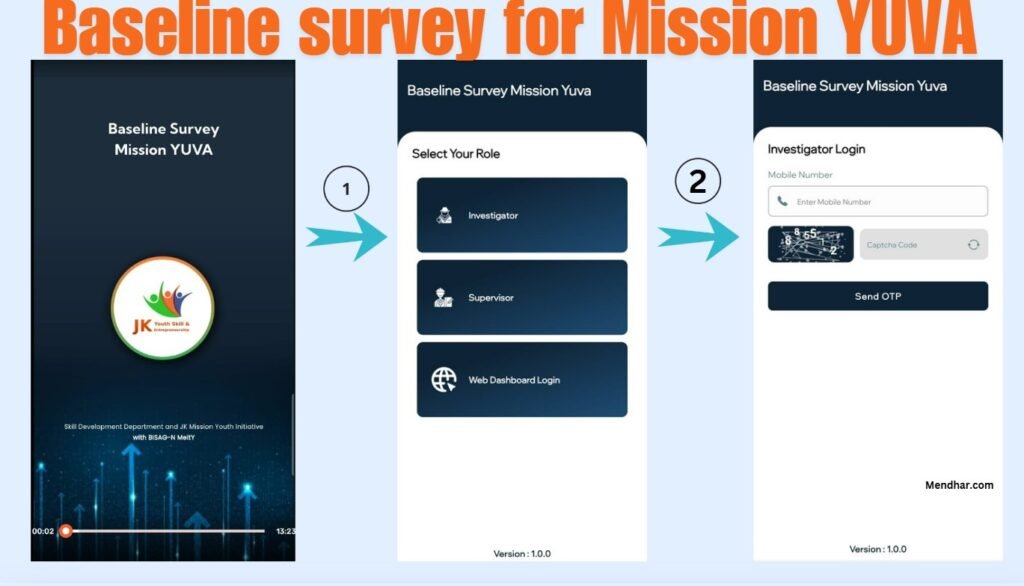
Baseline surveys are critical for understanding the existing conditions of a community, organization, or project before initiating any intervention. They provide the foundation for measuring progress and evaluating success over time. For Mission YUVA, an initiative aimed at empowering youth through various programs, filling out the baseline survey form accurately is essential to ensure the effectiveness of its outreach and impact. This step-by-step guide will help you understand how to fill out a baseline survey form for Mission YUVA with clarity and precision.
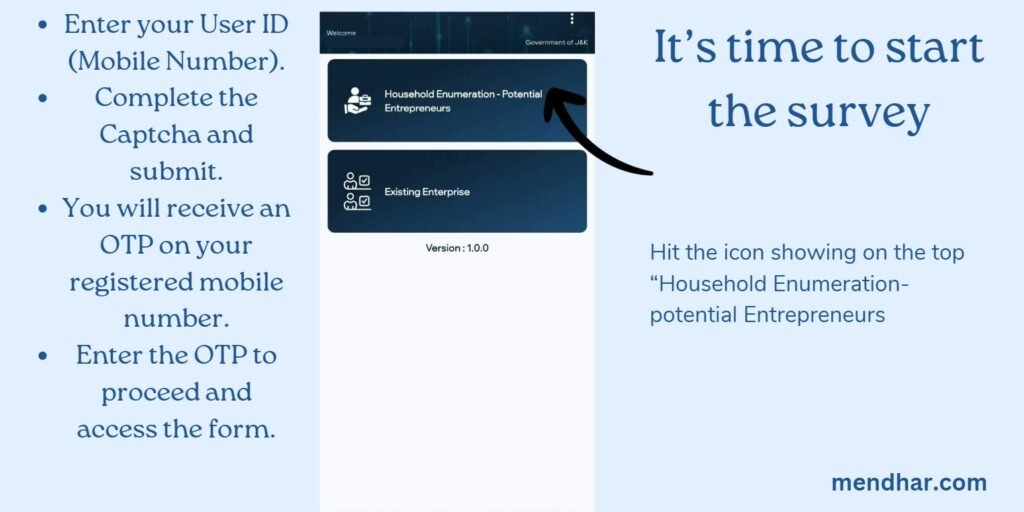
How to Fill Out a Baseline Survey Form for Mission YUVA
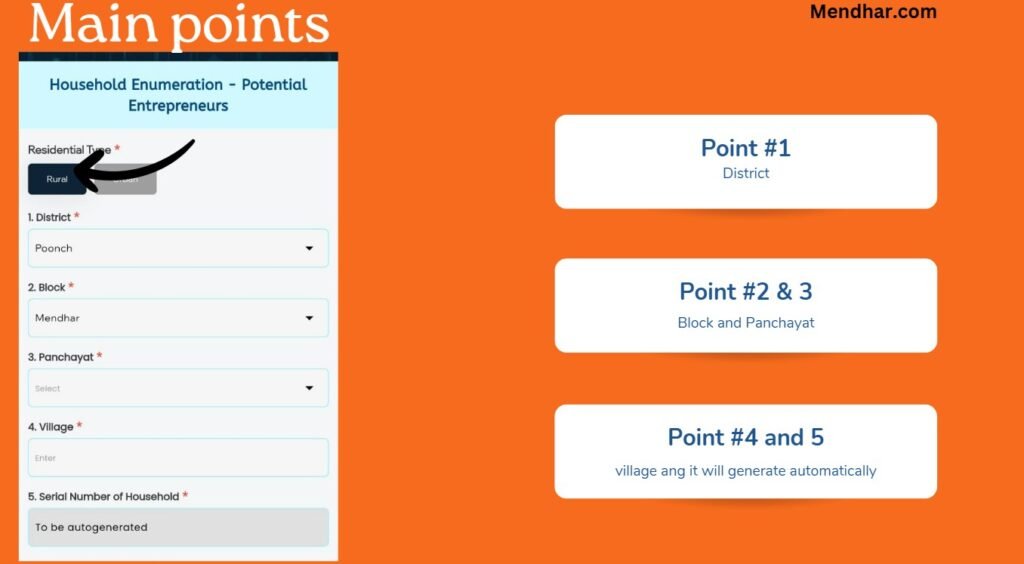
How to Fill Out a Baseline Survey Form for Mission YUVA
1.Log In:
- Enter your User ID (Mobile Number).
- Complete the Captcha and submit.
- You will receive an OTP on your registered mobile number.
- Enter the OTP to proceed and access the form.
Choose the Appropriate Tab:
- Once logged in, you will see two tabs:
- Household Enumeration – Potential Entrepreneurs
- Existing Enterprise
- Select the first tab: Household Enumeration – Potential Entrepreneurs.
- Once logged in, you will see two tabs:
Fill Out the Form:
- Begin by selecting Rural as the category.
- Proceed with the following selections:
- District: Choose your district from the dropdown menu.
- Block: Select the block that corresponds to your area.
- Panchayat: Choose the panchayat under your block.
- Village: Select your village from the options provided.
Complete the Form:
- Fill in all the required columns accurately.
- Double-check the details before submitting.
By following these steps, you will successfully complete the form.
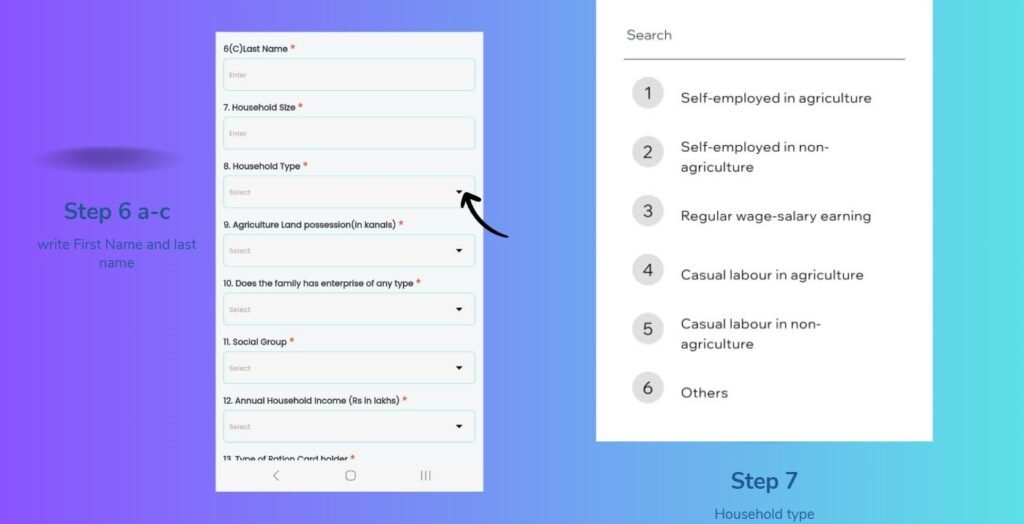
In column 6:Household type you needs to choose the following below category
1. Self-employed in Agriculture:
This category includes individuals who own or lease agricultural land and manage farming operations for profit. They rely on agriculture-based activities like crop cultivation, livestock rearing, fishing, forestry, etc., as their primary source of livelihood. Such individuals often work independently or with family members, without formal employment contracts.
2. Self-employed in Non-agriculture:
This group includes people who manage their own business or trade in non-agricultural sectors. Examples include shopkeepers, small-scale entrepreneurs, artisans, service providers (like plumbers or tailors), and others engaged in manufacturing, retail, transportation, or service-based industries. These individuals work independently and are not employed by others.
3. Regular Wage-Salary Earning :
This refers to individuals who are formally employed and receive a consistent wage or salary at regular intervals. They usually work for an employer under a formal contract and are entitled to benefits like provident fund, medical insurance, and paid leave. Examples include teachers, office workers, engineers, and factory employees.
4. Casual Labour in Agriculture:
Casual laborers in agriculture are individuals who work on a temporary or seasonal basis in agricultural activities. They are paid daily wages or based on the work they perform. Examples include workers hired for planting, weeding, harvesting, or other farming tasks during specific seasons.
5. Casual Labour in Non-agriculture:
This group comprises individuals working in non-agricultural sectors on a temporary or ad-hoc basis. They are usually employed without formal contracts and are paid on a daily or piece-rate basis. Examples include construction workers, daily wage earners in small-scale factories, and helpers in retail or transport services.
6. Others:
This category includes individuals whose employment status doesn’t fit into the above categories. It may include those who rely on irregular or unconventional sources of income, such as beggars, people living off remittances, retirees with no pension, or others engaged in unique or undocumented forms of livelihood.
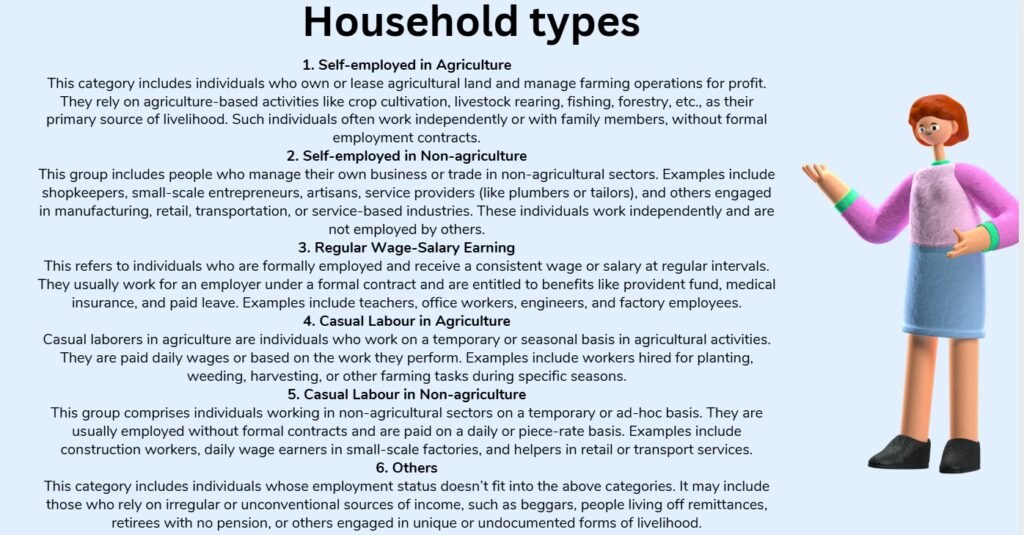
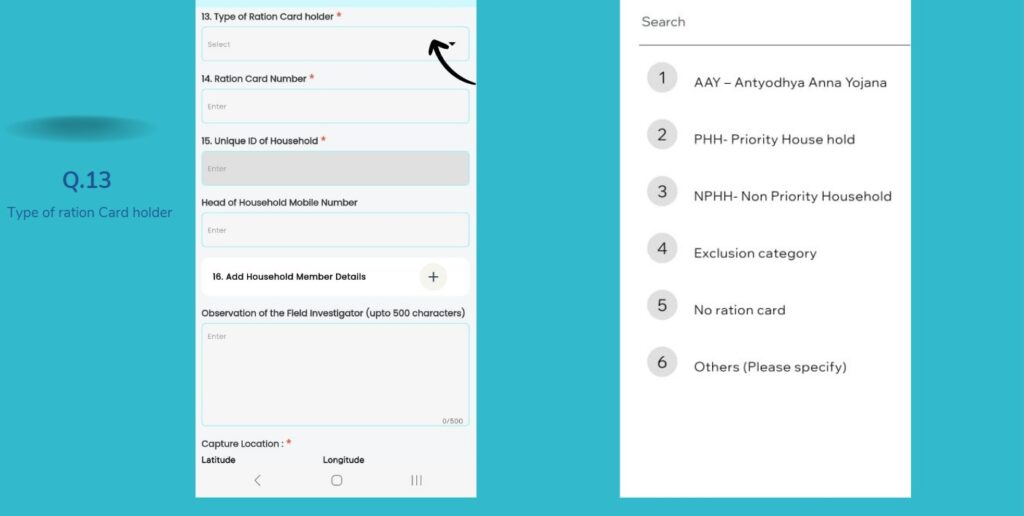
Here are the definitions and categories commonly used in the baseline survey forms for Mission YUVA. Follow these guidelines to understand and accurately fill out the form:
AAY (Antyodaya Anna Yojana): This category is for households covered under the Antyodaya Anna Yojana scheme, which provides highly subsidized food grains to the poorest families. If your household falls under this category, tick the relevant box.
PHH (Priority Household): This refers to households identified as eligible for food subsidies under the National Food Security Act (NFSA). If applicable, mark your household as a PHH.
NPHH (Non-Priority Household): Non-priority households do not qualify for subsidized food grains. If you belong to this category, select NPHH in the form.
Exclusion Category: Indicate this category if your household is explicitly excluded from receiving benefits under specific government welfare schemes. Ensure to provide any necessary details or documentation if required.
No Ration Card: If your household has not been issued a ration card and does not access the Public Distribution System (PDS), check this box.
Others (Please Specify): If your household does not fit into any of the predefined categories, use this section to specify your status or provide additional information.
Tips to fill Out the Baseline Survey Form for Mission YUVA
Be honest: Provide accurate information to ensure the data collected reflects your true circumstances.
Ask questions: If you’re unsure about a section, seek clarification from Mission YUVA representatives.
Stay organized: Keep all necessary documents handy to avoid delays.
Use legible handwriting: If filling out a physical form, write neatly to avoid errors in data entry.
FAQ: Filling Out the Baseline Survey Form for Mission YUVA
1: What is the purpose of the baseline survey form for Mission YUVA?
The baseline survey form for Mission YUVA is designed to collect initial data about beneficiaries’ socio-economic, educational, and professional backgrounds. This data helps in tailoring programs that address the specific needs of youth.
Q2: Can I fill out the baseline survey form for Mission YUVA online?
Yes, Mission YUVA often provides the option to fill out the baseline survey form online. Check their official website or contact their representatives for detailed instructions.
Q3: What documents are required to fill out the baseline survey form for Mission YUVA?
You may need identification documents, educational certificates, and any records related to your employment or household details.
Q4: How long does it take to complete the baseline survey form for Mission YUVA?
It typically takes 20-30 minutes to fill out the baseline survey form for Mission YUVA, depending on the depth of information required.
Q5: Why is it important to fill out the baseline survey form for Mission YUVA accurately?
Accurate information ensures the success of Mission YUVA by helping develop programs that genuinely address the needs and challenges of the participants.
Conclusion
Filling out a baseline survey form for Mission YUVA is a vital step in ensuring the success of its youth empowerment initiatives. By following this step-by-step guide, you’ll not only complete the form efficiently but also contribute to shaping impactful programs that cater to real needs. Remember, the accuracy and quality of the data you provide will directly influence the success of Mission YUVA’s objectives.
By learning how to fill out a baseline survey form for Mission YUVA and ensuring the form is completed correctly, you play an essential role in creating opportunities for growth and development. Whether it’s education, skill-building, or career support, Mission YUVA is here to empower youth—and your input is the first step in that journey.


